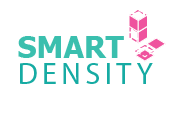Because of these differences in access to the stations, the RER supports a very different type of urban structure than a subway does. The stations are far apart, but the high speed of travel means it is easy to travel between stations across a large region.
This difference has five major implications for the urban structure, some of which are generally acknowledged, but some are ignored.
Within Walking Distance
-
Allow High Residential Density Within Walking Distance of the RER Stations
With a subway system, stations far from the core don’t provide easy access to the rest of the region. But with an RER, even stations located far from the core provide easy access to the rest of the region, and the areas around them are very valuable and should be allowed to develop with significant densities.
What happens in practice?
Across the GTA, in places where municipalities have created any plans for station areas, they have generally understood the importance of the rail station and provide opportunities for dense urban development. The full potential of the station areas may not always be fully realized – for example, often large portions of the development near a station are townhouses – but at least there is an understanding that the station areas should be allowed to intensify.
-
Create Local Centres Near the RER Stations
Each RER station will serve a large number of people, most of whom will live beyond walking distance and arrive by bus, bike or car. This makes the area near the station a convenient location for services and a natural centre. To make these places work as centres, they should be developed with opportunities for large commercial uses and institutions.
What happens in practice?
Currently, intensification in station areas is mostly perceived as just an opportunity to add housing next to train stations, and as a result, the station areas are often planned with only very local needs in mind, and this is often the case even when high residential densities are permitted.
-
Locate Regional Destinations Near RER Stations
With all-day, two-way service, the RER stations across the region don’t just provide access from the suburbs to the centre. Rather, they themselves become easily accessible from the entire region. This means that regional destinations such as large employment centres, large shopping centres, large entertainment complexes, hospitals and higher education facilities should be located near RER stations. Locating all the new regional destinations near the RER stations will make them accessible and greatly contribute to the utility of transit across the region.
What happens in practice?
Unfortunately, this aspect of the RER potential is unaddressed, and many regional destinations are still built in locations with poor regional transit access. For example, the Mackenzie Vaughan Hospital, to be completed in 2020, was built far from any rail transit; and the regional mall proposed by Osmington in Brampton is 1.4 km from Mt. Pleasant GO Station, just beyond a reasonable walking distance.
Beyond Walking Distance
-
Focus on Local Transit to the RER Station
As the region is trying to upgrade its transit infrastructure, there is a lot of focus on large capital projects such as LRTs and BRTs. Those investments are important, but to make the most of the great connectivity offered by the RER, it’s critical to have local buses that provide frequent and reliable service to the RER station and the centre around it.
While taking a bus is not as direct as walking, a frequent and reliable bus that only needs to be ridden a few kilometres greatly extends the reach of the RER station.
What happens in practice?
This aspect is relatively simple as it does not require much capital investment, but it is also less exciting than the large projects, putting its implementation in danger.
-
Promote Intermediate Intensification beyond the Walking Distance to the RER Stations
Only a small area will be within walking distance from the RER stations. But a much larger area, within 2-3 km from the stations, will be within 10-15 minutes reach when using a bus or cycling.
These intermediate areas are not so well-served that they would justify very high densities, but they are convenient enough to justify medium densities, while today many of these areas are extremely underutilized and have exclusively large-lot single-family houses or low retail and office buildings surrounded by seas of surface parking. Making use of these areas is especially critical in light of the housing affordability crisis and the huge and unsatisfied demand for urban living in the region.
Those in-between areas provide a golden opportunity for intermediate levels of intensification such as townhouses, triplexes and low-rise apartment buildings on the local streets, and small 4-6 storey apartments with commercial uses at the lower levels on the main streets.
An incremental and small-scale intensification has two major benefits. First, unlike large buildings, which require large lots and have significant visual impact, buildings on small lots retain the character of small lots, different owners and diverse designs. Second, small buildings are more cost-effective as they can use wood construction and do not require complex mechanical systems the way larger buildings do.
What happens in practice?
This aspect of the RER potential is to the most part completely unaddressed, but there is a huge untapped potential in these places to introduce gentle density for those seeking proximity to transit and urban amenities with a neighbourhood feel.
